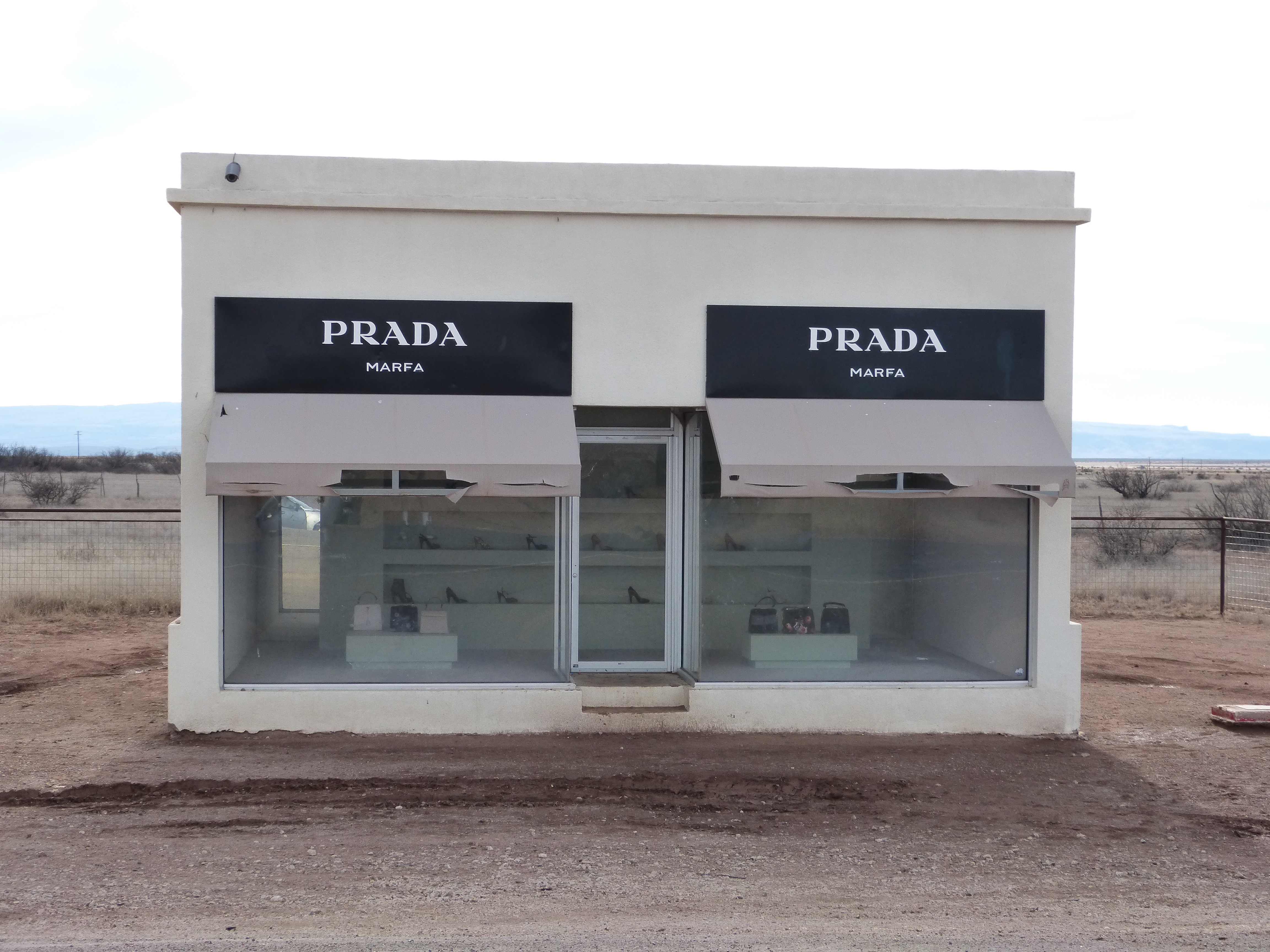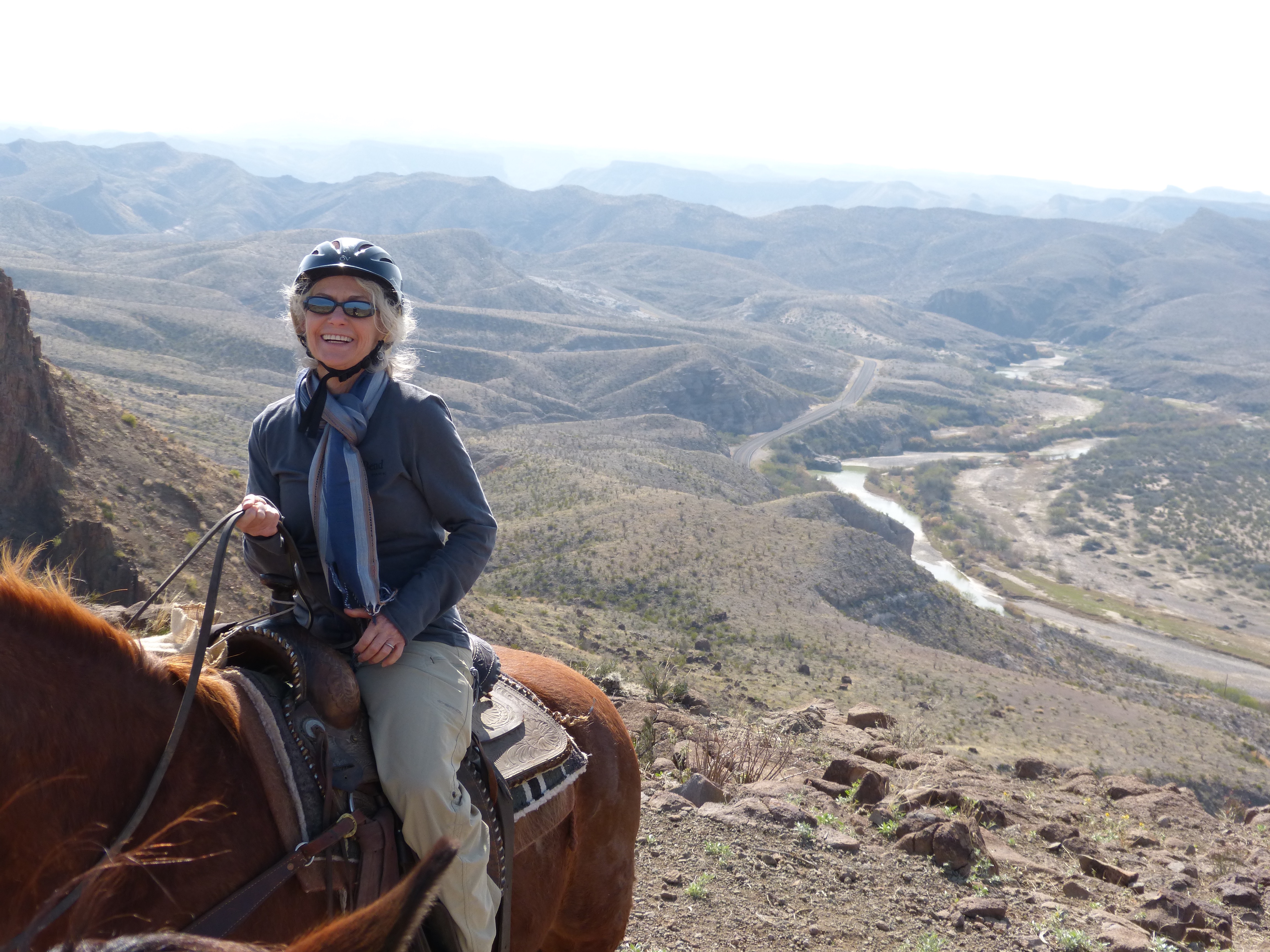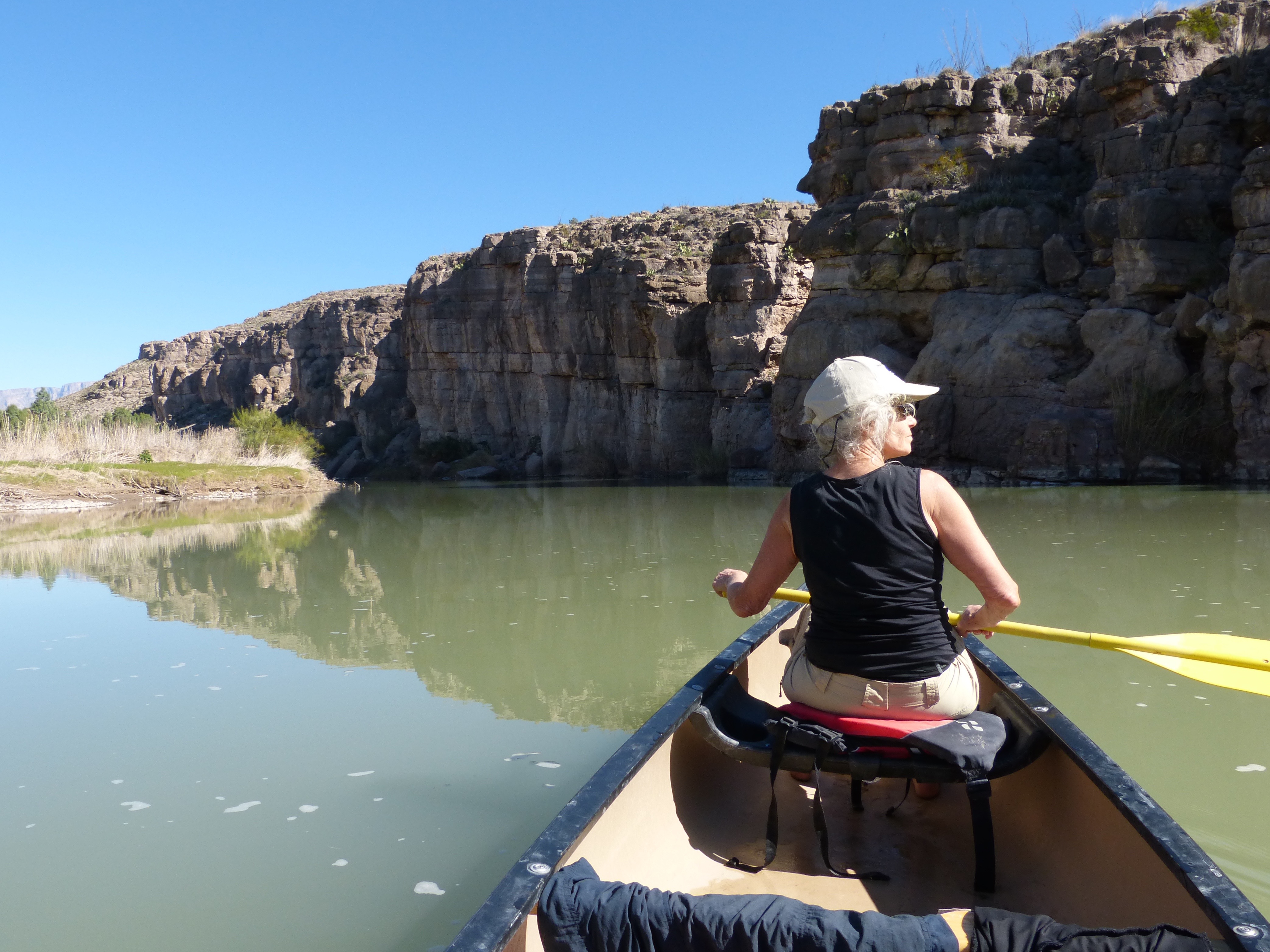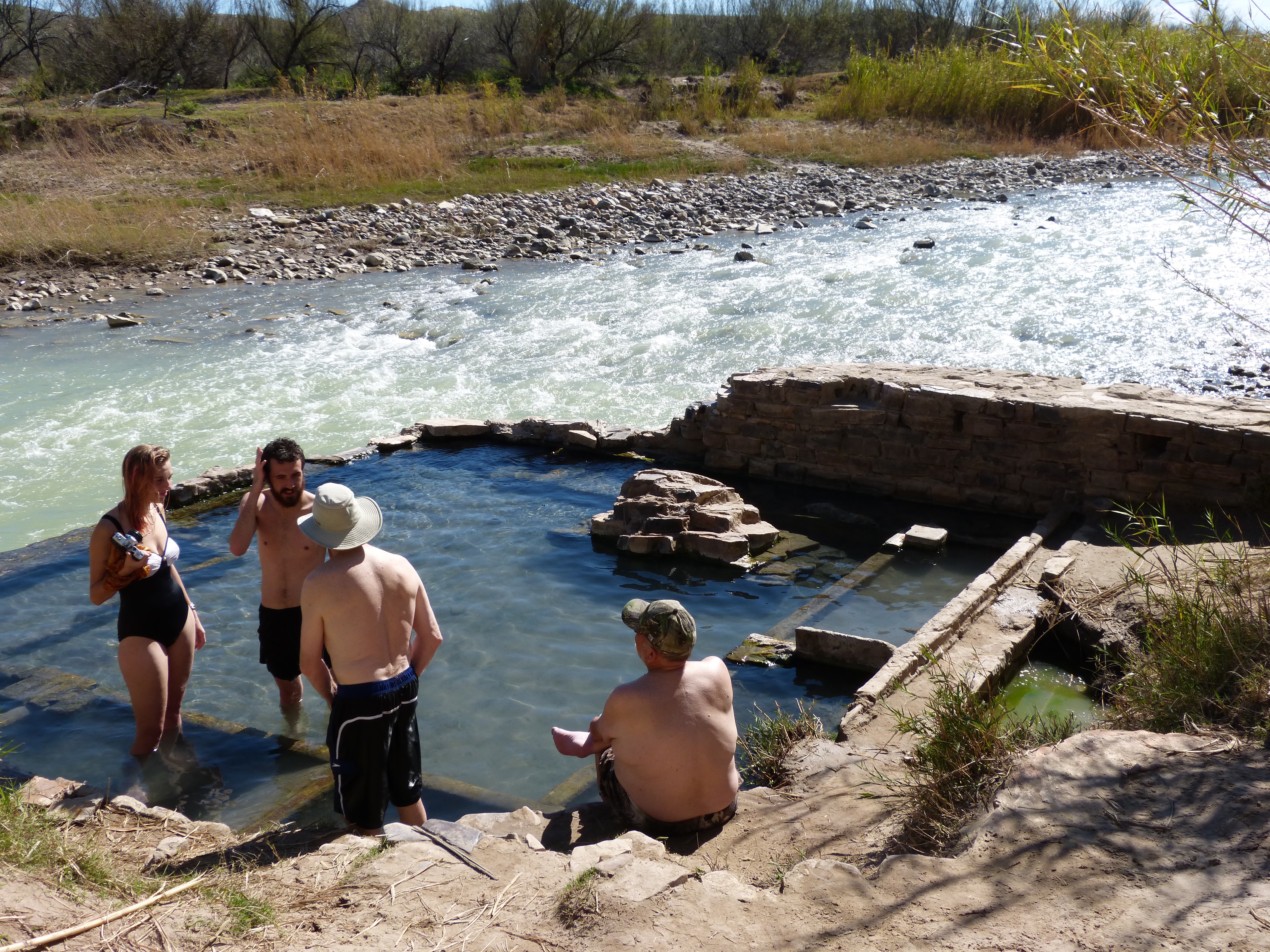The last thing we expected to see on the lonely two lane black top in the heart of SW Texas was a Prada store.  Upon close inspection, we realized we were looking at an art installation, the first sign of the quirky avant garde art community in nearby Marfa. This was only the first of several surprises on our recent exploration of the wonders of — get this — Brewster County, TX, in a remote corner of a state better known for oil, BBQ, and cowboys.
Upon close inspection, we realized we were looking at an art installation, the first sign of the quirky avant garde art community in nearby Marfa. This was only the first of several surprises on our recent exploration of the wonders of — get this — Brewster County, TX, in a remote corner of a state better known for oil, BBQ, and cowboys.
The main draw was Big Bend NP, the best national park most people have never heard of. It’s remote, almost 300 miles from El Paso, and huge, over 800,000 acres. The few people who make the effort to visit have its rugged beauty largely to themselves.
For the first two nights we stayed at the Chisos Mountain Lodge, a sprawling collection of low-slung wooden buildings in a basin surrounded by sharp peaks and broad monoliths of red rock. On our first full day in Big Bend we drove to Santa Elena Canyon at the far western edge of the park on an empty ribbon of road. Along the way, my gaze wandered from the road to long, sweeping vistas in all directions and a lunar landscape of desert, canyons, mountains and wind- and rain-sculpted rocks. We reached the Santa Elena Canyon parking lot at about 9:30 a.m. It was empty, and no one else was in sight. A short walk across a sandy beach took us to the edge of the Rio Grande. This shallow and narrow rio is not so grande by the time it trickles through Santa Elena Canyon. If we wanted, we could have waded across the 20 to 30 yards of knee-deep water to Mexico.
We reached the Santa Elena Canyon parking lot at about 9:30 a.m. It was empty, and no one else was in sight. A short walk across a sandy beach took us to the edge of the Rio Grande. This shallow and narrow rio is not so grande by the time it trickles through Santa Elena Canyon. If we wanted, we could have waded across the 20 to 30 yards of knee-deep water to Mexico.
A steep narrow path winds into the canyon up from the beach. In just a few minutes we were surrounded by rock walls and silence except for the burble of the water.  We didn’t run into any one else until we headed back down the path to the beach. The total length of the hike from the parking lot and back is less than two miles.
We didn’t run into any one else until we headed back down the path to the beach. The total length of the hike from the parking lot and back is less than two miles.
After lunch at the lodge, we went on the 5.6 mile round trip hike to the Window, a notch in a cliff at the end of a streambed high above the desert floor. The steep trail descends about a 1000’ alongside the dry streambed, then funnels through a narrow tree-shaded canyon to the Window. I inched up as close to the Window as I dared on the slick rock and could see the desert many miles away and almost 2000 feet below.
The next day featured a horseback ride on state park lands adjacent to the national park. The horses, lunch, and Armando, our guide, were provided by Big Bend Stables. The scenery was provided by God, god, Yaweh, Allah, Vishnu, dharma, the forces of the universe, or whatever, depending on your beliefs. I didn’t bother with that. I just gawked and hung onto the saddle horn for dear life. Later that day we eased our sore butts onto bar stools at the Starlight Theater Restaurant in the ghost town of Terlingua for tequila, chili, roast quail and Texas BBQ. Terlingua is an interesting town, if you can call it that. It was a thriving mining town in the early part of the 1900s, then fell on hard times and abandoned in the 1940s. In recent years it has turned into a refuge for artists, hippies, bikers, survivalists, itinerant river guides, 9-11 conspiracy theorists, snow birds, tourists and other free spirits, many of them living off the grid.
Later that day we eased our sore butts onto bar stools at the Starlight Theater Restaurant in the ghost town of Terlingua for tequila, chili, roast quail and Texas BBQ. Terlingua is an interesting town, if you can call it that. It was a thriving mining town in the early part of the 1900s, then fell on hard times and abandoned in the 1940s. In recent years it has turned into a refuge for artists, hippies, bikers, survivalists, itinerant river guides, 9-11 conspiracy theorists, snow birds, tourists and other free spirits, many of them living off the grid.  Terlingua is just down the road from the Big Bend Casitas, where we stayed for the next two nights, a definite advantage after an evening at the Starlight.
Terlingua is just down the road from the Big Bend Casitas, where we stayed for the next two nights, a definite advantage after an evening at the Starlight.
On our last day in the park we canoed down the Rio Grande on a trip run by the Far Flung Outdoor Center. It was a mellow, leisurely paddle down the shallow, slow moving river through canyons and desert.  The several hours on the river were broken up by lunch, a two-mile hike, and a long soak in the historic hot springs on the river bank.
The several hours on the river were broken up by lunch, a two-mile hike, and a long soak in the historic hot springs on the river bank.
 One of the canoes did get hung up in an especially shallow stretch of the river and overturned. The occupants walked a few feet to shore in shin deep water while the guides emptied the water out of the canoe. If they had walked the 10-20 yards to the opposite shore they would have been in Mexico — illegally, of course, but it didn’t seem like it would have been a big deal if they did. It was that kind of trip.
One of the canoes did get hung up in an especially shallow stretch of the river and overturned. The occupants walked a few feet to shore in shin deep water while the guides emptied the water out of the canoe. If they had walked the 10-20 yards to the opposite shore they would have been in Mexico — illegally, of course, but it didn’t seem like it would have been a big deal if they did. It was that kind of trip.
I usually travel far for adventure – e.g., Asia, Africa, Antarctica, and Australia. What a pleasure to discover someplace new, remote, quirky, and scenic in my own metaphorical back yard. No sleepless nights from jet lag or gastric distress from unfamiliar cuisines (the chili, on the other hand…).
As a Californian, I’m not a fan of Texas politics. But to quote another Californian in a much different context and with a very different accent, “I’ll be back.”
(For more information on Big Bend National Park check out their website. For more information and photos from Don and Katherine’s trip, check out the blog on Don’s website)
